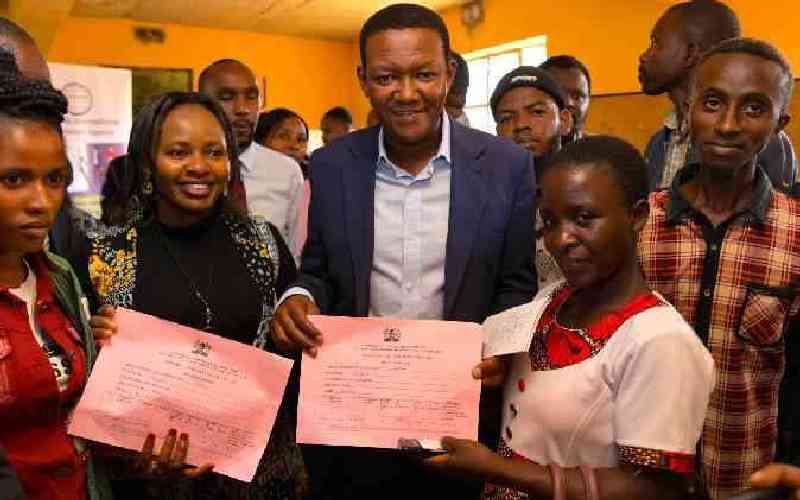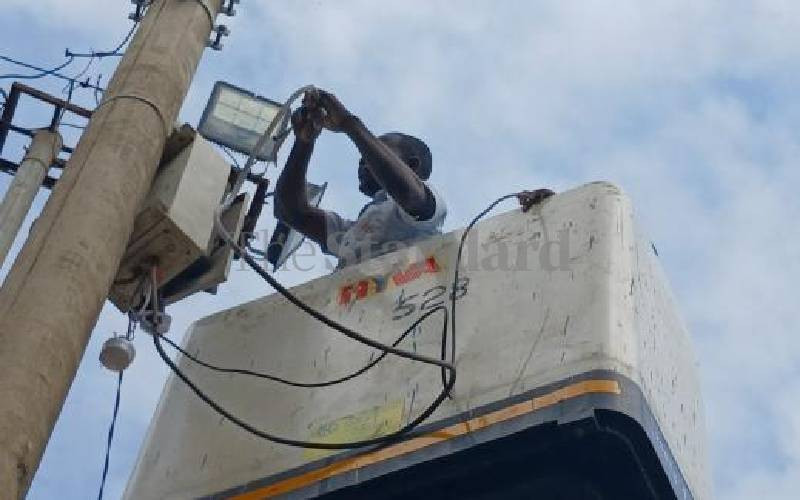In line with the boiling frog analogy, is Kenya headed for a debt default? This is today’s unsaid question for the Kenya Kwanza administration after the Finance Bill 2024, then pro-accountability, protests. It is only the other day that the Supplementary I Act was signed.
Yet all we are hearing is Broad Based Government this and that. When, last Friday, appointments were the news, it was as if, like the legend of Nero’s Rome, our leadership fiddles as Kenya burns.
Because on the same Friday, the last of the Big Three pronounced itself on our great country. S&P Global Ratings lowered its long-term sovereign credit rating for Kenya from “B” to “B-” (ratings go from “AAA” to “BBB-” for investment grade borrowers, and “BB+” to “CCC-” for speculative grade borrowers).
Although technically a downgrade, the rating keeps Kenya at a strong chance of meeting its financial obligations (in S&P creditworthiness terms, currently meets commitments but faces uncertainties).
Naturally, the withdrawal of Finance Bill 2024 is the highlight of their research report, but the real point is that we ended up, in the Supplementary I estimates, with a higher budget deficit than originally planned. Or put differently, we were not able or willing to cut enough spending to make up the revenue shortfall. Fiscal consolidation is off track for now, and debt will increase. The report also reminds us that we never actually meet our revenue targets in the first place.
S&P Global also maintained Kenya’s short-term sovereign credit rating at “B”. In general, they keep Kenya’s outlook at stable, not positive or negative, but this is reliant on “strong economic growth and continued access to concessionary financing (read IMF and World Bank)” as a counterbalance to high interest costs (Sh1 trillion in 2024/25, including Sh750 billion on domestic borrowing, which is commercial), slower fiscal consolidation and structural external imbalances.
S&P offers upside and downside scenarios (which would improve or worsen their ratings). The upside comes if we can manage external and domestic financing pressures, or better still, we actually get down to demonstrable revenue and expenditure reforms towards fiscal consolidation. I would like to think this is more than hiking taxes and cutting official travel and office tea.
Predictably, the downside is the opposite, with an important addition. If future debt-repurchase operations (remember the Eurobond I one in December 2023?) are seen as distressed exchanges.
What about the other two of the Big Three? On August 2, Fitch Ratings downgraded Kenya from “B” to “B-” on their Long-Term Foreign Currency Issuer Default Rating (IDR). Again, a downgrade, but it keeps Kenya within their categorization as “elevated risk of default” in a “degrading financial situation; highly speculative” (overall ratings go from “AAA” to “BBB-” for investment grade, and “BB+” to “C” (likely/near default) to R/D (default) for speculative grade).
FB 24’s withdrawal and rising domestic debt costs are behind this downgrade, as is the “increased risk of political instability” (don’t they believe in our freshly minted broad-based government?).
External financing challenges are also seen as a risk, although they offer a stable, not positive or negative, outlook in the expectation of “strong official creditor support (read IMF again) to alleviate (these) near-term external liquidity pressures”. They forecast a higher 2024/25 budget deficit (4.7 per cent of GDP) than Supplementary I (4.3 per cent of GDP, from an original 3.3 per cent), owing to revenue shortfalls and higher debt service and social spending.
S&P Global projects our 2024/25 budget deficit at 5.4 per cent, also on account of revenue underperformance and higher debt costs, especially high-interest domestic borrowing. This could worsen if pending bills (which they estimate at 4.4 per cent of GDP) are factored in.
Then there is Moody’s who launched this most recent spate of downgrades with theirs on July 8. They didn’t even wait for Supplementary I, or broad-based government, as they dropped their Kenya rating from “B3” (speculative and high credit risk) to “Caa1” (poor quality and very high credit risk). As with the other two, ratings are in two broad ranges – “AAA” to “Baa3” for investment grade, and “Ba1” to “Ca” (near default) to “C” (in default). Basically, junk territory.
This assessment was particularly tough, arguing the downgrade reflects “significantly diminished capacity to implement revenue-based fiscal consolidation that would improve debt affordability and place debt on a downward trend”. Their outlook is negative, relating this to the government liquidity problems. There is no real upside, developmental spending cuts would reduce growth, Kenya is at a “dead end”.
Of course, many, including Kenya, questions these ratings. Indeed, the Big Three – estimated to control as much as 95 per cent of the global credit ratings market – was in the spotlight during the 2008 global financial crisis, when they offered investment grade ratings to junk right until the crisis hit. More recently in December 2023, Reuters reported that the Indian Government’s Chief Economic Advisor, V Anantha Nageswaran, had argued that rating agencies should not just rate countries but share their methodologies for country use, while avoiding the risk of “sowing suspicion about…discriminatory intent”. The way to ask the question here might be, how do we ever get to an investment grade rating?
Back to the original question. These ratings, and research, offer four nuanced messages, or perceptions. The first is positive and negative. The positive is Kenya must find a way to return to its fiscal consolidation path. S&P Global’s angle about revenue and expenditure reforms is particularly appropriate. The negative is that Kenya loses its way. This is not inconceivable.
The second, in all three reports, highlights the importance of IMF and other concessionary funding to alleviate external financing pressures. It is notable that S&P Global keeps the rating at “B” for the short-term but drops it to “B-” for the long-term. The difference between the two is that we still have an IMF program for the former but none yet for the latter.
The third and fourth take us back to our data. For the short-term, both S&P Global and Fitch observe growth in the 2024/25 budget deficit between original and supplementary, and both expect it to be higher than projected. This requires borrowing with attendant interest costs. The surprise is our supplementary estimates retained interest costs from the original estimates.
For the long-term, the worries look far greater. This administration spent its first 15 months organizing itself day and night around a single Eurobond bullet payment. Going forward, we have a gradually growing debt service pipeline from Sh1.853 trillion in 2024/25 (Sh1.866 trillion in 2023/24) to Sh2.552 trillion in 2027/28 (including Sh825 billion in domestic interest!).
This debt service includes totals of Sh560 billion in Chinese debt, Sh550 billion in Eurobond debt and Sh660 billion across the IMF and World Bank. All before new borrowing or refinancing.
It isn’t quite debt default yet, and IMF is still in the picture. But, if we assume rating agencies only see part of this picture, isn’t it likely our debt path is the case of the frog slowly burning alive?
 The Standard Group Plc is a multi-media organization with investments in media platforms spanning newspaper print
operations, television, radio broadcasting, digital and online services. The Standard Group is recognized as a
leading multi-media house in Kenya with a key influence in matters of national and international interest.
The Standard Group Plc is a multi-media organization with investments in media platforms spanning newspaper print
operations, television, radio broadcasting, digital and online services. The Standard Group is recognized as a
leading multi-media house in Kenya with a key influence in matters of national and international interest.











